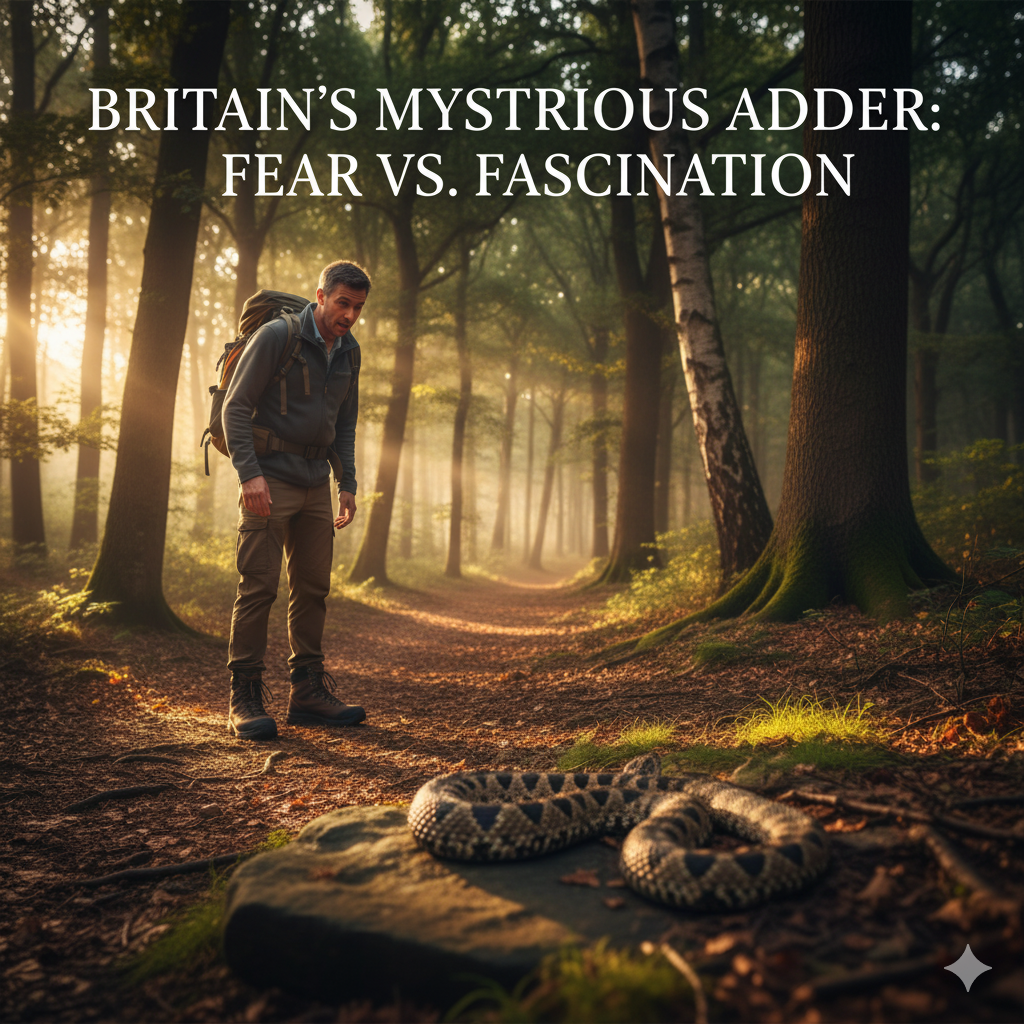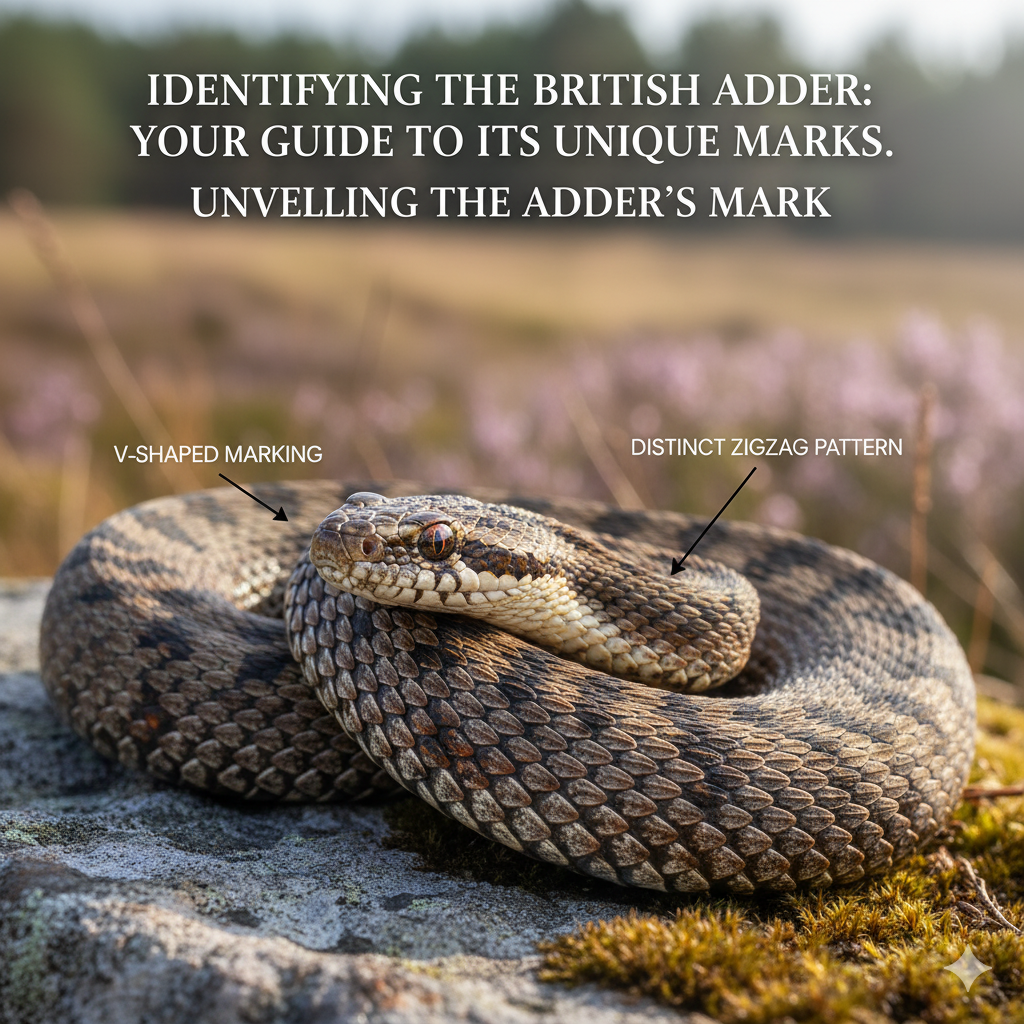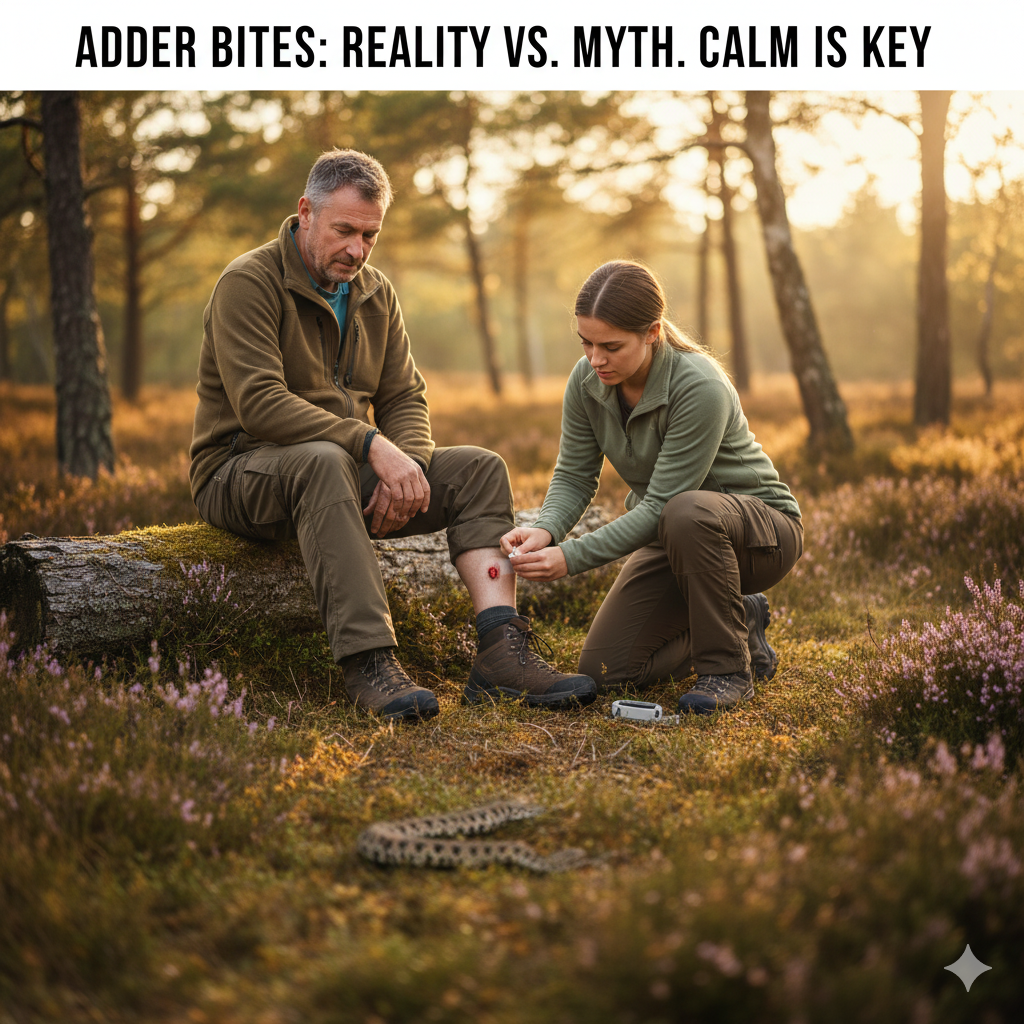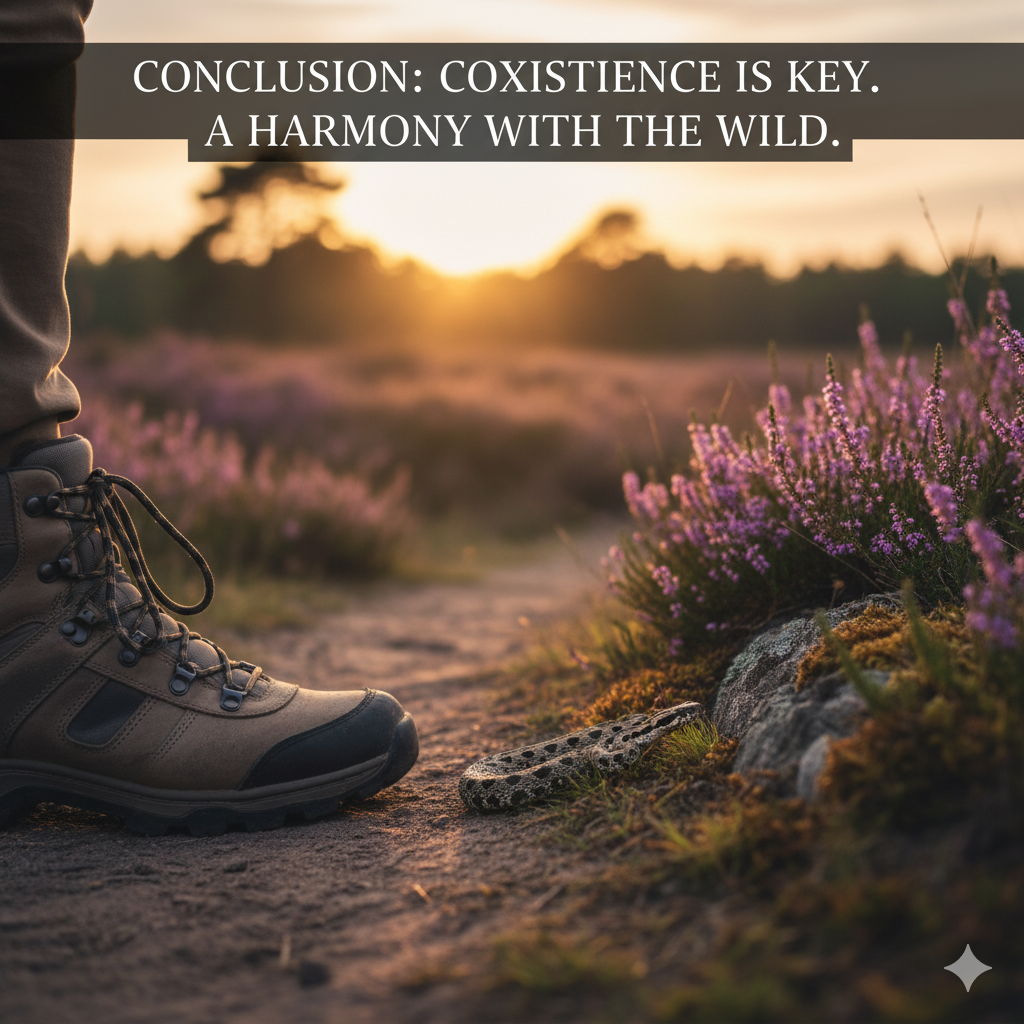Introduction: A Walk in the Woods, a Glimpse of the Wild
British Adder Snake: Picture this: you’re enjoying a peaceful walk in the British countryside. The sun is out, the birds are singing, and you’re miles away from the hustle of city life. Suddenly, you spot something moving in the undergrowth. A long, serpentine shape. Your heart gives a little jump. Is it… an adder? For many of us, the British adder is a source of a quiet, ancient fear. It’s the only venomous snake we have, and the thought of a deadly encounter can make even the most seasoned hiker nervous. But what if I told you that the reality is far less dramatic than the legend? Let’s take a closer look at this shy and fascinating creature and find out what really happens when you cross paths with it.

Spotting the Adder: Your Guide to a Safe Distance
British Adder Snake: The first step to a good encounter is knowing what you’re looking at. Adders are masters of camouflage, and spotting one can feel like winning a wildlife lottery. The most common sign is the zigzag pattern that runs down their back. It’s like a little, lightning bolt-shaped tattoo. Most of the time, they are a beautiful shade of grey or brown, but some can be a striking black all over. Don’t be fooled by the grass snake, which is a big, harmless cousin that also lives in the UK. The best way to tell them apart is to look for the adder’s V-shaped mark on its head.
These snakes aren’t just lounging around anywhere, either. They’re sun worshippers. You’ll often find them coiled up on a sunny rock, a log, or a patch of grass in open areas like heathland, moorland, or along the edges of woodlands. They need to bask to get warm, so these are the places you’ll want to keep an eye out for. The more you know about their habits, the less you have to worry.

The Bite: A Lot of Hype, a Lot Less Danger
British Adder Snake: Let’s be honest, the word “deadly encounter” is what gets our attention. But for a healthy adult, an adder bite is almost never fatal. It’s true that the venom can cause pain, swelling, and a nasty scar, but it’s not designed to kill a human. Think about it: a small snake has no interest in fighting a big person. Its venom is for hunting its favourite snacks, like mice and lizards. When an adder bites a person, it’s usually because it was startled or accidentally stepped on. It’s a desperate “leave me alone!” moment, not an attack.
If you are unlucky enough to get bitten, the most important thing to do is to stay calm. Panic can make things worse. Don’t try to suck out the venom or do anything dramatic. Just get to a hospital. Your best bet is to avoid the situation entirely, and that’s where the right gear comes in.
Your Go-To Gear for Peace of Mind(British Adder Snake)
British Adder Snake: Now, I’m not saying you need to suit up in full armour to go for a walk. But a few simple items can make all the difference.
1. A First-Aid Kit:
Every hiker should have one, and it’s especially useful in adder country. A simple kit with bandages and antiseptic wipes can help you manage the initial shock and keep the area clean while you get help. It’s a small thing to carry for a lot of peace of mind.
2. Sturdy Boots:
This is your number one defence. Most adder bites happen on the foot or ankle. Wearing a good pair of high-ankled hiking boots can prevent a bite entirely. If you’re going to be walking through tall, thick grass, consider getting some snake-proof gaiters. They’re a fantastic way to add an extra layer of protection to your lower legs.
3. A Good Field Guide:
Knowledge is the best tool you have. Carrying a British wildlife field guide can help you identify the adder and other native snakes, which in turn helps you understand their behaviour. When you know what you’re looking at, fear turns into fascination, and a potentially scary moment becomes a cool wildlife sighting.

Conclusion: Coexistence is Key
British Adder Snake: Our shared world with the British adder is one of mutual respect. It’s a beautiful, shy creature that just wants to be left alone. By understanding its habits and taking a few simple precautions, a “deadly encounter” can be a peaceful and fascinating observation. So, the next time you’re on a trail, keep your eyes open, your boots on, and your mind curious. You might just catch a glimpse of this wonderful and misunderstood part of Britain’s wild heart.

